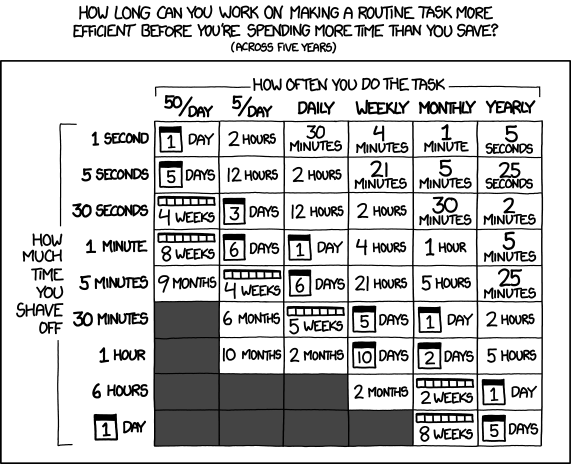How Automation Can Shape (and Simplify) Your Business
Over the past few months, I’ve been spending more time learning and working with automation tools like n8n. What started as a small experiment just trying to connect a few things together has turned into something I now reach for more often in my day-to-day work.
This post isn’t about building massive AI systems or replacing teams with robots. It’s about small, quiet improvements that help you and your team move faster without burning out on busywork. I’m based in the Philippines, and a lot of what I see around me, especially in small businesses and agencies is still very manual. Repetitive tasks, spreadsheet-based tracking, emails that could’ve been automated.
So I wanted to write down what I’ve been learning about automation, how it actually works in practice, and why it’s worth paying attention to especially if you’re running or supporting a business that’s trying to do more with less.
What We Usually Think of When We Hear “Automation”
The word “automation” tends to bring up strong reactions. Some people think of factories replacing workers with machines. Others think of tech companies using AI to lay off teams and cut costs.
That’s not what I’m talking about here.

Most of the automation I’ve seen and used myself doesn’t remove people. It removes the repetitive, time-consuming parts of the work. The parts where someone has to copy data between tools, send the same email ten times a week, or remind the team to update a spreadsheet.
In practice, automation often makes space for better work. Instead of spending your time on status updates, you’re reviewing insights. Instead of chasing confirmations, you’re planning what comes next. It doesn’t erase the need for people it shifts what they spend their time thinking about.
How Automation Actually Shows Up in Real Work
Let’s say your business receives client invoices or payment notifications through email. Normally, someone has to:
- Check the inbox daily
- Manually open each message
- Decide whether it’s invoice-related
- Extract the amount and due date
- Create a follow-up task or calendar reminder
This is simple work, but it adds up and it’s easy to miss things when the inbox gets full. With a single automation workflow, here’s what happens instead:
- Every hour, the workflow checks your Gmail for unread messages.
- It uses AI (via OpenAI) to read the email and decide if it’s about an invoice.
- If yes, it pulls out the due date, amount, sender, and subject line.
- It then:
- Adds a label to the email
- Marks it as read
- Creates a task in Google Tasks for follow-up, with all the key details
No one had to open the email or copy anything manually. If the message isn’t related to an invoice, the system skips it.
It’s a small automation, but it removes a task that someone was doing every day, and makes sure important payments don’t slip through the cracks.
What This Means for Small Teams or Local Businesses
In many small businesses here in the Philippines especially in services like cleaning, logistics, printing, events, or digital marketing, work often depends on people doing the same tasks again and again by hand.
Filling out spreadsheets. Following up by email. Copying info from one tool to another. It’s not anyone’s fault, that’s just how the process was built. But over time, it eats up hours that could go into actual service or client work.
Automation doesn’t replace these roles. It shifts them. Instead of spending time updating a schedule or reminding clients about payments, your staff can spend that time solving problems, improving delivery, or helping customers directly.
For lean teams, this makes a real difference. Even a few small automations can free up hours per week and reduce mistakes that happen when things are rushed or forgotten. It also helps when team members wear multiple hats. You don’t need to build a full system from scratch. You just need a few workflows that work reliably in the background.
Automation Creates New Kinds of Work
One thing that often gets missed in the automation conversation is this: it doesn’t just change how we work,it creates entirely new kinds of work.
Once the repetitive tasks are handled, someone still needs to:
- Monitor and improve the workflows
- Handle exceptions or edge cases
- Decide what gets automated next
- Make sure the tools are working as expected
These are not low-skill jobs. They require thinking, decision-making, and a sense of how the business runs. In many ways, they’re more valuable than the tasks they replaced.
And as more businesses adopt tools like n8n, Airtable, Zapier, or Make, the demand for people who understand automation, especially in a local context continues to grow. Companies need people who aren’t just button-pushers, but know when a process makes sense to automate and how to fit it into an existing workflow.
It’s not about replacing people. It’s about giving people better tools to do better work.
Closing Thoughts
Automation isn’t about doing everything with machines. It’s about making space to think, plan, improve, and do the kind of work that actually moves your business forward.
If you’re running a small business or part of a growing team, you don’t need to automate everything. Just start with one thing that slows you down or regularly gets forgotten. Build a simple workflow around that. Then do another. Over time, you’ll have a system that quietly supports you in the background.
Tools like n8n make this accessible even without a big IT budget or a full dev team. And once you start, you’ll likely begin to see other parts of your workflow with fresh eyes.
If you’re already using automation or just thinking about where to begin. I’d love to hear what you’re working on.